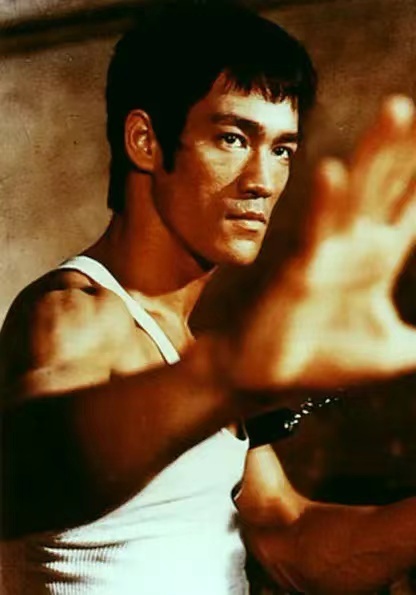
In collaboration with the Bruce Lee Foundation, the Hong Kong Heritage Museum will present some 400 invaluable items of Bruce Lee memorabilia in the exhibition titled "A Man Beyond the Ordinary: Bruce Lee," with large-scale multimedia and interactive programs. His films, martial arts achievements and life story show how Lee Jun-fon's perseverance gave birth to the legend that is Bruce Lee.
Internationally renowned megastar Bruce Lee (1940–1973) was born Lee Jun-fon, in the United States. Educated in Hong Kong and the US, he founded the Jun Fan Gung Fu Institute in the US and introduced Chinese kung fu to the American public through television and film. In 1971, he returned to Hong Kong and made five films, which became classics. He combined various schools of martial arts to create what is known as his Jeet Kune Do. Behind the spotlight, the megastar loved his family and enjoyed reading. He expressed his emotions and ideas in letters and other types of writing. Through daily training and reflection, he went beyond his limits and became a global legend.
Address: 2/F Thematic Gallery 6, HK Heritage Museum, Sha Tin
Time: 28 November 2021 onwards
Below is the story of Bruce Lee retrieved from the exhibition webpage.

IN MOTION
Bruce Lee made a name for himself in the 1970s with classics such as The Big Boss, Fist of Fury, The Way of the Dragon and Enter the Dragon, but his acting career began as early as the 1940s…
In 1941, Bruce Lee made his screen debut in the Cantonese film Golden Gate Girl at just three months old. Since then, he had appeared in more than 20 Cantonese films as a young boy and was praised as a "genius child star". In 1966, seven years after he left Hong Kong for the US, he starred in the television series The Green Hornet and became known to the American public for his athleticism, kickstarting his film career in the country. In 1971, Lee returned to Hong Kong to further his career and became a world-famous star.

Martial arts have been part of Bruce Lee's life since he was a young boy, and he built his iconic film career and life around them.
As a child, Bruce Lee watched his father, Lee Hoi-chuen, practice tai chi and stylized movements in Chinese opera, while he would practice different martial art techniques under artists in Cantonese Opera troupes and film studios. In his formative years, his father invited a master to instruct the young Lee in Nei Jia Quan (Internal Style Boxing) concepts. At the age of 13, he started taking Wing Chun classes from Ip Man. When he was 18, before he went to the US for study, he learnt Northern-style boxing under Siu Hon-sang. Apart from Chinese martial arts, he also learnt Western boxing and fencing while he was in school in Hong Kong. He was well trained in various fighting styles since his teens.

While living in the US, Bruce Lee gave martial arts demonstrations on various occasions, including campus activities, martial arts events, and fairs. He published a book, Chinese Gung Fu: The Philosophical Art of Self-Defense, and opened three Jun Fan Gung Fu Institutes in the US in order to promote martial arts to the Western world.
STILLNESS
In the 1960s, Bruce Lee's career in Hollywood was bleak. He suffered a lower back injury in 1970 and was bedridden for half a year. His doctors said he would never be able to practise martial arts again. Even so, he was not discouraged. With a firm conviction to "Walk On", he resumed his physical training regimen and was able to overcome his injury with sheer determination and a desire to surpass himself. He read voraciously during his recuperation; his library at home contained around 2,500 books which covered a wide range of subjects, from philosophy, martial arts, psychology, history, to dance. He was able to gather and elevate his thoughts through introspection and writing, distilling them down to their essence.
Bruce Lee returned to Hong Kong to further his career in the 1970s, seeking to produce films with high artistic and production values and showcase his martial arts philosophy to an international audience. For this reason, in addition to acting for the camera, he also worked as a screenwriter, director and martial arts choreographer. As can be seen from his manuscripts, Lee would write his own scripts, arrange the mise en scene, draft dialogues and choreograph the martial arts sequences, in his bid to make his production immaculate in every detail.

During his study in the US, Bruce Lee gained an empirical understanding of the Western world's way of life and thinking. He enrolled in philosophy and psychology courses while studying at the University of Washington, which laid down a solid foundation on theories for his future martial arts philosophy, Jeet Kune Do. Jeet Kune Do combines Lee's philosophical thinking and practical combat experience with his studies in kinesiology and physiology, placing emphasis on the liberation of the mind and natural combat techniques.
Bruce Lee loved to write. He often wrote letters to his wife and friends to share with them moments from his work and daily life. He also wrote articles and poetry to express his aspirations and ways of looking at life. The manuscripts he left behind show us how Lee Jun-fon was like out of the limelight.




















Comment